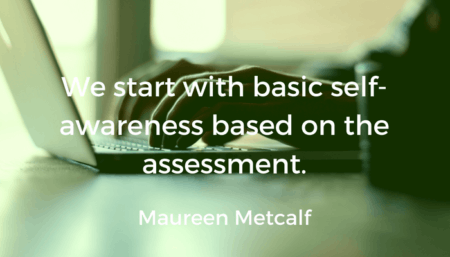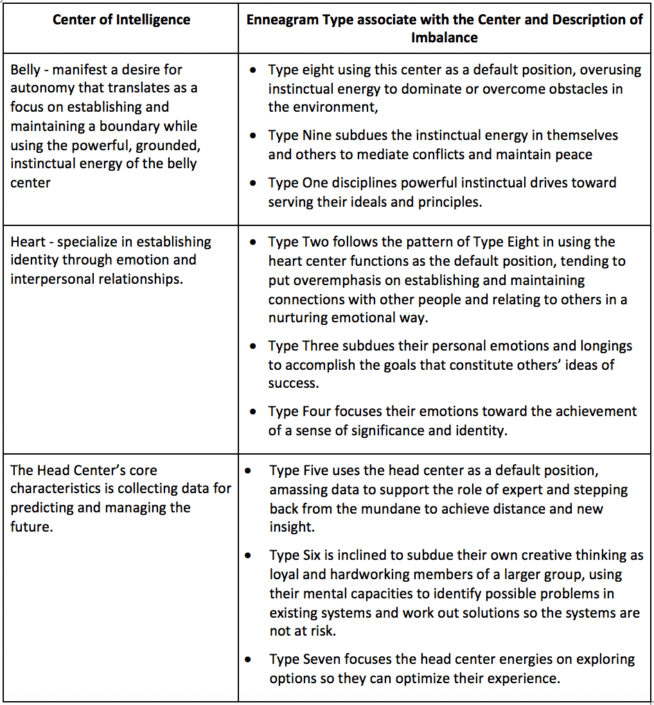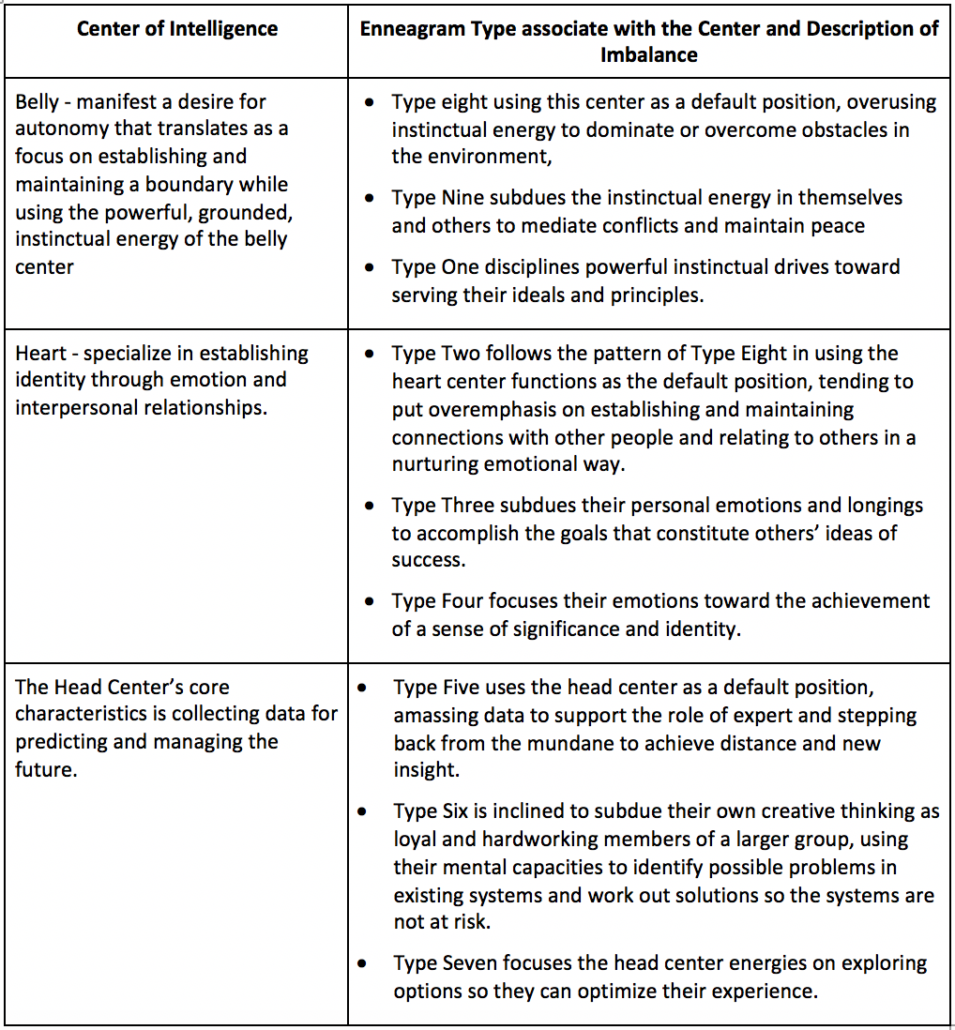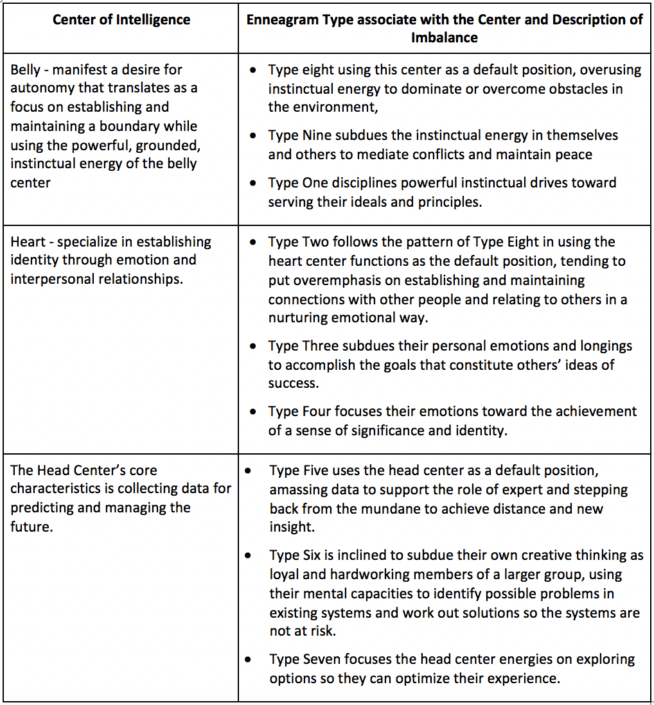
This blog is a companion to the Voice America Interview on May 18, 2018 with Belinda Gore, Board Member for International Enneagram Association, Using Enneagram Assessment to Build Leadership Effectiveness. This blog was co-written by Belinda Gore and Maureen Metcalf. Belinda is a thought leader and major contributor to the award winning Innovative Leadership book series.
As we talk about the importance of self-awareness for leaders, one framework and tool we use is the Enneagram (Please review our prior postfor additional information about Enneagram types) . In this post we will discuss one important element of the overall Enneagram assessment system, the centers of intelligence.
Maureen and Belinda have used the Enneagram as a foundation for self-awareness. As an example, here is Maureen’s experience: “I test as a “type three” – sometimes known as The Achiever – using the Enneagram assessment language. This means that part of my identity is drawn from what accomplish in the world. Using the centers of intelligence framework, I fall within the heart center, which means that I tend to subdue my heart’s desire in favor of focusing on getting results. This tendency has shown up throughout my career – I focused on logic and results. This focus allowed me to thrive in large consulting firms, but it also left me with a blind spot that related to human feelings and emotions. I didn’t use my heart as much of a guide. While I am not exactly Spock, I wished I was. As I moved into the field of leadership development and leading transformation efforts, I needed to add a stronger connection to my own feelings as well as the feelings of others into my mental algorithm. This was not an easy process. I liked being focused and results oriented and I believed that feelings would slow me down. They may, in fact, slow me down in the short term AND they remove a blind spot that could – and I am sure did – trip me up. “
In the Enneagram system the centers of intelligence are broken into triads, each containing three of the nine types, each with a characteristic pattern of imbalance.


It is likely that you have already recognized that we each have ALL nine types in us to some degree in that we have all had experiences of manifesting something of each of these patterns of behavior.
In all cases, the process of change and healing as identified by this method is the process of moving to a higher level of functioning and being able to sustain it. Even at higher levels, the same process of rewiring the tendencies for neurological firing exists.
The processes for change can vary and, in most cases, we start with basic self-awareness based on the assessment. When you take the Enneagram assessment and review your results, do they resonate with you? Can you relate to the information you have received about your center of intelligence? If so, it is important to start to notice when you show the imbalance associated with your type and build a conscious practice to modify your behavior. In the case of Maureen referenced above, she needed to have a conscious practice to stop and notice her feelings and the feelings of others and identify how this information could help her meet her goals. The important message here is to have a deliberate practice to notice when the imbalance is at play and correct it as quickly as possible by bringing your thinking back into balance.
If you are a professional coach, you have learned to meet your clients where they are, using language that is useful and meaningful to them. You honor who they are, how they came to be the people they are today and assist them in unhooking from what may once have helped them to survive and is now only a detriment.
To become a more innovative leader, please consider our online leader development program. For additional tools, we recommend taking leadership assessments, using the Innovative Leadership Fieldbook and Innovative Leaders Guide to Transforming Organizations, and adding coaching through our online innovative leadership program. We also offer several workshops to help you build these skills.
About the Authors
Belinda Gore, PhD focuses on designing, developing and delivering leadership, assessments, workshops, and coaching. She is a key thought leader in the development of the Innovative Leadership framework.
She is a psychologist, executive coach, and experienced seminar leader who is skilled in supporting her clients in high-level learning. With 30 years’ experience in leadership development and interpersonal skills training, she is known for helping teams discover strength in their diversity to achieve their mutual goals and works with individual leaders to access their natural talents to maximize effectiveness and personal satisfaction. Her clients have included senior leadership in global companies, senior and middle management in both corporate and nonprofit organizations, and entrepreneurs. She will be leading our new service line focused on helping leaders and their organizations build resilience along with offering leadership team development, board development, coaching, and Enneagram assessment.
Maureen Metcalf, CEO and Founder of Metcalf & Associates, is a renowned executive advisor, author, speaker, and coach whose 30 years of business experience provides high-impact, practical solutions that support her clients’ leadership development and organizational transformations. Maureen is recognized as an innovative, principled thought leader who combines intellectual rigor and discipline with an ability to translate theory into practice. Her operational skills are coupled with a strategic ability to analyze, develop, and implement successful strategies for profitability, growth, and sustainability.





